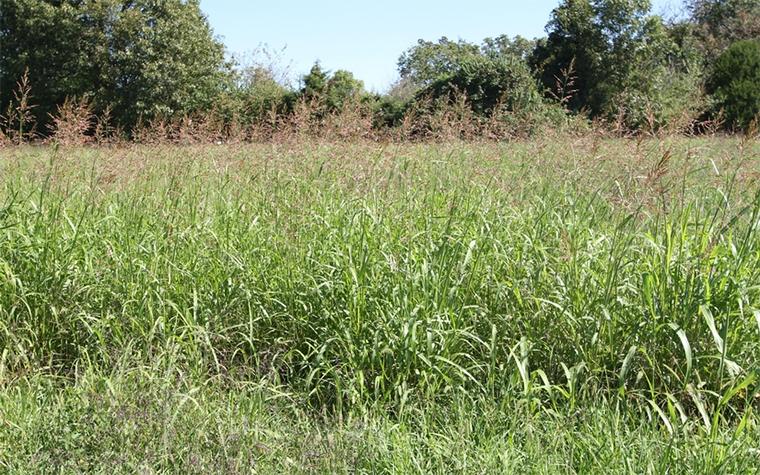ST. JOSEPH, Mo. – Johnsongrass seems to be rearing its ugly head again in northwestern Missouri, says University of Missouri Extension agronomist Wayne Flanary.
Johnsongrass is not new to Missouri, but its appearance in areas where control is difficult is concerning, says Flanary. In 2015, Missouri Department of Agriculture listed Johnsongrass on its noxious weeds list.
Reaching over 6 feet in height, this perennial is a common weed of roadside ditches, crops and pastures, says MU Extension weed scientist Kevin Bradley. It grows quickly and is very competitive with other crops and forages.
Once established, Johnsongrass is hard to eradicate, mainly due to the rhizomes – root-like structures that spread underground and put out new shoots. Its large seed heads produce as many as 80,000 seeds in a year, assuring its return in spring. Seeds shatter easily and can remain dormant and viable for more than 10 years. They can spread by water, equipment and wildlife such as birds and deer.
Johnsongrass is sometimes mistaken for shattercane, barnyardgrass or fall panicum, but these weedy grasses are annuals and do not produce rhizomes.
Some Johnsongrass populations in northwestern Missouri have shown resistance to glyphosate (Roundup, etc.), one of the most common herbicides for the control of this species, says Bradley.
“Although for the most part we do a pretty good job at suppressing Johnsongrass with spring or summer herbicide applications in corn or soybean, this is not the ideal time to treat this species with herbicides,” Bradley says. “Early fall herbicide applications are more likely to result in herbicide translocation to the rootstocks and longer-term control.”
If plants have been cut off with a mower or combine, wait for plants to resume active growth before treatment for best results. Glyphosate and/or group 1 herbicides with clethodim, sethoxydim, fluazifop or quizalofop are some of the most effective options available, says Bradley.
Also, control Johnsongrass in non-planted areas around the field to reduce the spread of this weed. Drive equipment around weedy patches instead of through them to avoid seed spread.
MU Extension veterinary toxicologist Tim Evans says Johnsongrass can cause issues in cattle and other ruminants. These include prussic acid poisoning, nitrate toxicity and sorghum cystitis.
To prevent cyanide poisoning in immature or frost-damaged leaves, avoid grazing it until it reaches at least 24 inches and wait 14 days after frost. This does not apply to cured hay.
Nitrate poisoning occurs in lower stalks during dry weather and testing may be warranted. It remains toxic in hay, but toxicity is reduced by half in silage.
Nitrate poisoning happens quickly in animals and can cause quick death. Evans recommends gradually introducing animals when moving livestock to new pastures to allow them to adapt. Take special caution when introducing pregnant animals, and carefully observe animals to detect problems in the early stages, he says.
Sorghum cystitis caused by Johnsongrass affects only horses, and only a small percentage of them. Affected animals lose control of their back legs and bladder, with permanent damage to the spinal cord.
Control requires an integrated approach of physical, chemical methods and other methods, including heavy grazing and low mowing. Single methods rarely provide adequate control, says Bradley.
In tall fescue pastures or hayfields, weed wiping or spot treatment of glyphosate is one of the most effective herbicidal options. Visit the Mizzou Weed Science website for more information.
Practice grazing management of 12-18 inches, or higher in drought, and good grazing or clipping to prevent seed development. Use caution when applying nitrogen and harvest at or before boot stage or. A conditioner or surfactant also may be needed.
You can identify Johnsongrass by photos on the MU Weed ID Guide.
